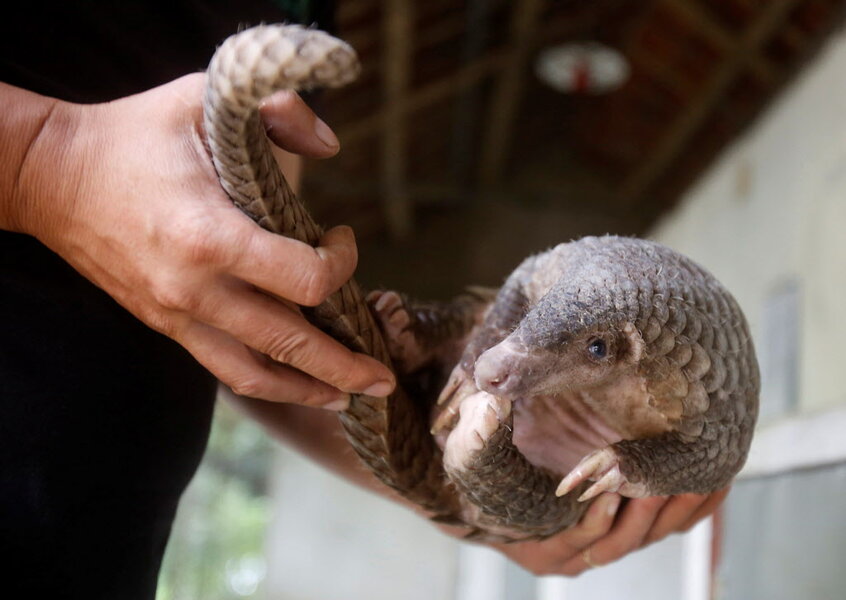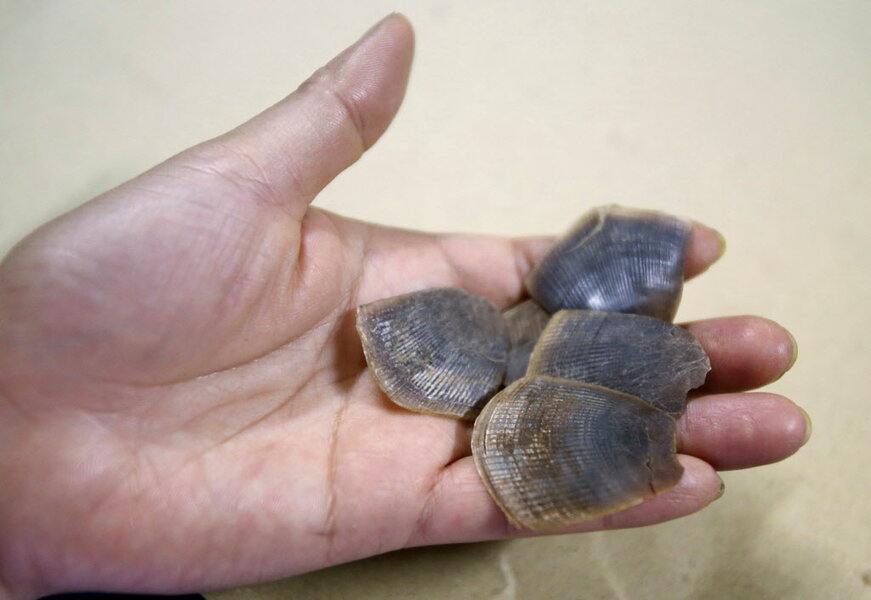Want to save the pangolin? Look to elephants.
Loading...
The United Nation’s Convention on International Trade of Endangered Species (CITES), which last week chose to ban all commercial trade of pangolins, will come to a close today.
The pangolin, also known as the scaly anteater, has been poached to near extinction. Wildlife conservationists hope the ban will help restore the species, which is harvested for meat and scales. But others say trade sanctions aren’t enough – that a coordinated effort between governments, businesses, conservationists, and communities will be necessary to save this maligned mammal.
“Hopefully this will be followed by increased resources and attention being devoted to saving this well armored – but utterly defensive – and wholly unique species,” Jeff Flocken, North American regional director at the International Fund for Animal Welfare, told Reuters.
Pangolins, despite their scaly armor, are rather shy mammals. Most will only emerge from their burrows at night, when they hunt insects. When threatened, they curl up into a ball.
And they are the most poached mammal in the world.
Wildlife officials estimate that some 1 million pangolins have been killed in the past decade. In Vietnam and other Asian countries, pangolin meat is considered a delicacy. The creature’s scales are used in traditional medicines. Decimated by commercial demand, the pangolin’s plight calls to mind that of another African mammal: the elephant.
Ivory bans have proven successful in Botswana and the US, and in Kenya, where elephant killings soon dropped "from thousands a year to maybe 100 by the end of 1990," Richard Leakey, the chairman of the Kenya Wildlife Service, told Scientific American. But the effectiveness of outright bans has been disputed.
As The Christian Science Monitor’s Gretel Kaufmann reported:
Some have argued that a legal trade could actually help elephants by giving rural communities economic incentive to protect elephants, rather than viewing them as an annoyance or threat. This may lead to greater conservation efforts and habitat protection, proponents say… But opponents of the legal trade point to recent studies, one of which found that a one-time, legal ivory sale in 2008 led to increased poaching of elephants.
New technologies have contributed to the fight against elephant poaching. In Uganda and Malaysia, researchers have used an artificial intelligence program to develop better anti-poaching strategies for park rangers. The AI targets areas with the most animal traffic and then randomizes the patrol route, so poachers can’t predict where wildlife officials will be.
In South Africa, officials have used drone technology to curb poaching. Silent, unmanned aircraft can survey high-risk areas at night, when human patrols would be dangerous. When they identify illegal activity on the ground, the drones send GPS coordinates back to park rangers for investigation.
In Kenya, students have even contributed to the movement. As a teenager, Mercy Sigey used Arduino computers to develop simple environmental sensors. The devices, which can be produced cheaply, automatically notify wildlife officials when poachers cross into animal reserves.
This report contains material from Reuters.









